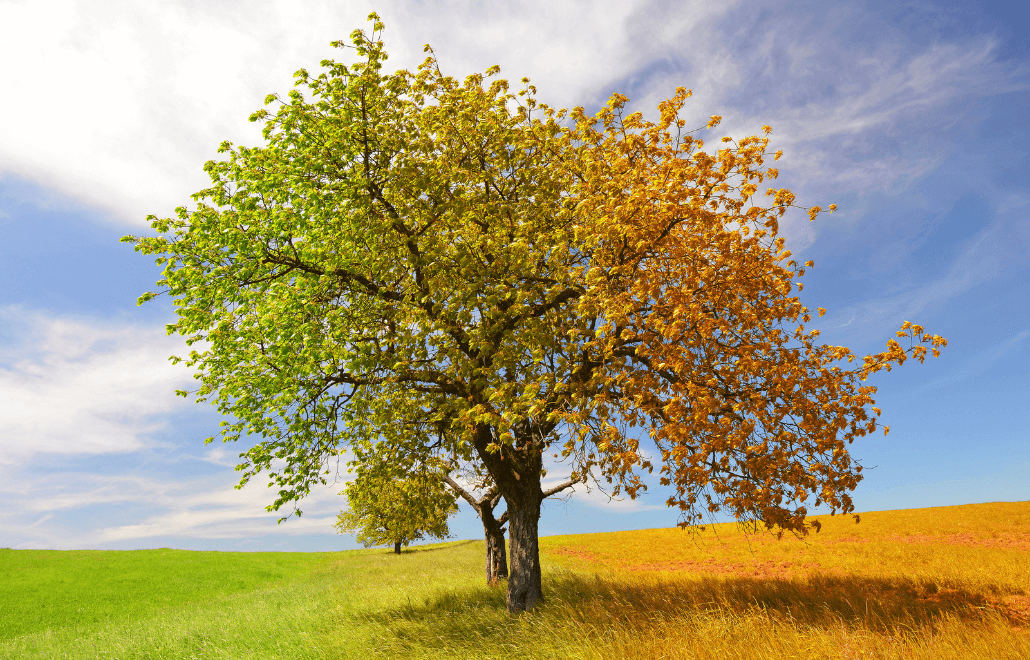
10 Jun Seasonal Tree Maintenance: A Year-Round Guide to Keeping Your Landscape Lush and Healthy
Trees are not just beautiful additions to our landscapes; they’re living organisms that require care and attention throughout the year. By implementing a proactive approach to tree maintenance, you can ensure that your landscape remains lush, vibrant, and healthy in every season.
Spring: Renewal and Growth
As nature awakens from its winter slumber, spring is the perfect time to kickstart your tree maintenance routine. Begin by inspecting your trees for any signs of damage or disease that may have occurred over the winter months. Look out for broken branches, pest infestations, or fungal infections, and address them promptly.
Spring is also an excellent time for pruning, as trees are entering their active growth phase. Remove any dead or diseased branches to promote healthy growth and improve the overall appearance of your trees. Additionally, consider fertilizing your trees to provide them with the nutrients they need to thrive throughout the growing season.
Summer: Protection and Hydration
As temperatures rise and the sun beats down, it’s crucial to protect your trees from the heat and drought stress. Mulching is an effective way to conserve moisture in the soil and regulate soil temperature, helping your trees stay hydrated and healthy during the hot summer months.
Regular watering is also essential during periods of drought, especially for newly planted or young trees. Deep watering once or twice a week is preferable to frequent shallow watering, as it encourages the development of deep roots that are better able to withstand drought conditions.
Fall: Preparation for Winter
As the leaves begin to change color and fall from the trees, it’s time to prepare your landscape for the winter ahead. Start by raking up fallen leaves and debris to prevent them from smothering your grass or becoming breeding grounds for pests and diseases.
Fall is also an ideal time for tree planting, as the cooler temperatures and increased rainfall create favorable conditions for root establishment. Be sure to choose the right tree species for your climate and soil type, and plant them according to proper spacing guidelines to allow for healthy growth.
Before winter sets in, take the time to inspect your trees for any signs of damage or structural weaknesses that could pose a risk during winter storms. Prune away any hazardous branches and consider installing tree wraps or barriers to protect young trees from frost and wind damage.
Winter: Dormancy and Rest
As nature settles into its winter slumber, trees enter a period of dormancy where growth slows, and metabolic activity decreases. While there may be less to do in terms of active maintenance during the winter months, it’s still essential to monitor your trees for signs of stress or damage caused by severe weather conditions.
Be on the lookout for snow or ice accumulation on tree limbs, which can cause branches to bend or break under the weight. Use a broom or soft brush to gently remove any snow buildup, taking care not to damage the tree in the process.
Winter is also an excellent time to plan for the upcoming year by researching new tree species, updating your landscaping design, or scheduling any necessary tree care services for the spring.
By following this year-round guide to seasonal tree maintenance, you can ensure that your landscape remains healthy, vibrant, and beautiful throughout the year. Remember to tailor your tree care routine to the specific needs of your trees and climate, and don’t hesitate to seek professional assistance if you encounter any issues beyond your expertise. With proper care and attention, your trees will continue to thrive and enhance your outdoor environment for years to come.

